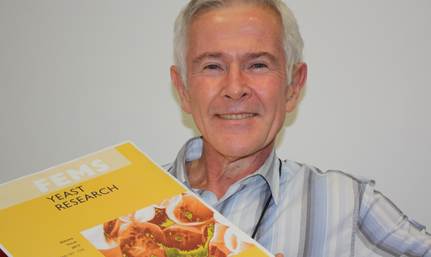Latest News Archive
Please select Category, Year, and then Month to display items
17 February 2021
|
Story Andre Damons
|
Photo Pixabay
 Two final-year MBChB students show how it is done when they donated blood earlier this year.
Two final-year MBChB students show how it is done when they donated blood earlier this year.
Bachelor of Medicine and Bachelor of Surgery (MBChB) staff and students in the Faculty of Health Sciences have challenged other departments in the faculty as well as other faculties and departments at the University of the Free State (UFS) to see whose staff and students will donate the most blood!
Mrs Angela Vorster, UFS Clinical Psychologist, says the South African National Blood Services (SANBS) has been appealing for increased blood donations since the onset of the COVID-19 pandemic last year. In order to provide support, the School of Clinical Medicine at the UFS held a virtual blood donation challenge in 2020, to encourage students to participate in altruistic behaviour and to enable the pre-clinical platform year groups to also feel like they are providing essential medical assistance.
“This was hugely successful and consequently we decided to include a blood donation challenge in our annual Mental Health Awareness programme. The benefits of donating blood are not only of a physiological nature (e.g. it assists in reducing iron levels and helps to control high blood pressure etc.) but means you are giving something of yourself. It will definitely save at least one life, perhaps more, and is incredibly beneficial in enhancing feelings of self-worth and personal meaning,” says Vorster.
The Faculty of Health Sciences invited the SANBS to UFS this week to provide all students and staff with the opportunity to donate blood at their place of work and study. So Have a Heart and take a few minutes to relax with a cookie and cool drink while your heart does the work of blood donation for you.
Details are as follows:
When: 18 and 19 February
Where: Francois Retief Foyer UFS
Time: 07:00-14:30
Link between champagne bubbles and the UFS?
2012-11-16
 |
|
Prof. Lodewyk Kock with an example of a front page of the publication FEMS Yeast Research, as adapted by F. Belliard, FEMS Central Office.
Photo: Leatitia Pienaar
15 November 2012
|
What is the link between the bubbles in champagne and breakthrough research being done at the Mayo Clinic in America? Nano research being done at our university.
Prof. Lodewyk Kock of Biotechnology says a human being consists of millions of minute cells that are invisible to the eye. The nano technology team at the UFS have developed a technique that allows researchers to look into such a cell, as well as other microorganisms. In this way, they can get an idea of what the cell’s “insides” look like.
The UFS team – consisting of Profs. Kock, Hendrik Swart (Physics), Pieter van Wyk (Centre for Microscopy), as well as Dr Chantel Swart (Biotechnology), Dr Carlien Pohl (Biotechnology) and Liza Coetsee (Physics) – were amazed to see that the inside of cells consist of a maze of small tunnels or blisters. Each tunnel is about 100 and more nanometres in diameter – about one ten thousandth of a millimetre – that weaves through the cells in a maze.
It was also found that these tunnels are the “lungs” of the cells. Academics doing research on yeast have had to sit up and take notice of the research being done at the UFS – to the extent that these “lungs” will appear on the front page of the highly acclaimed FEMS Yeast Research for all of 2013.
The Mayo Clinic, in particular, now wants to work with the UFS to study cancer cells in more detail in order to fight this disease, says Prof. Kock. The National Cancer Institute of America has also shown interest. This new nano technology for biology can assist in the study and development of nano medicine that can be used in the treatment of cancer and other life threatening diseases. Nano medicine uses nano metal participles that are up to one billionth of a metre in size.
Prof. Kock says laboratory tests indicate that nano medicine can improve the efficacy of anti-cancer medicine, which makes the treatment less toxic. “According to the Mayo Clinic team, nano particles are considered as a gold cartridge which is being fired directly at a cancer tumour. This is compared to fine shot that spreads through the body and also attacks healthy cells.”
“This accuracy implies that the chemotherapy dose can be lowered with fewer side effects. The Mayo Clinic found that one-tenth of the normal dosage is more effective against pancreas cancer in this way than the full dosage with a linkage to nano particles. According to the clinic, this nano medicine could also delay the spread of cancer,” says Prof. Kock.
The nano particles are used as messengers that convey anti-cancer treatment to cancer cells, where it then selectively kills the cancer cells. The transport and transfer of these medicines with regard to gold nano particles can be traced with the UFS’s nano technology to collect more information, especially where it works on the cell.
“With the new nano technology of the UFS, it is possible to do nano surgery on the cells by slicing the cells in nanometre thin slices while the working of the nano medicine is studied. In this way, it can be established if the nano medicine penetrates the cells or if it is only associated with the tiny tunnels,” says Prof. Kock.
And in champagne the small “lungs” are responsible for the bubbles. The same applies to beer and with this discovery a whole new reach field opens for scientists.